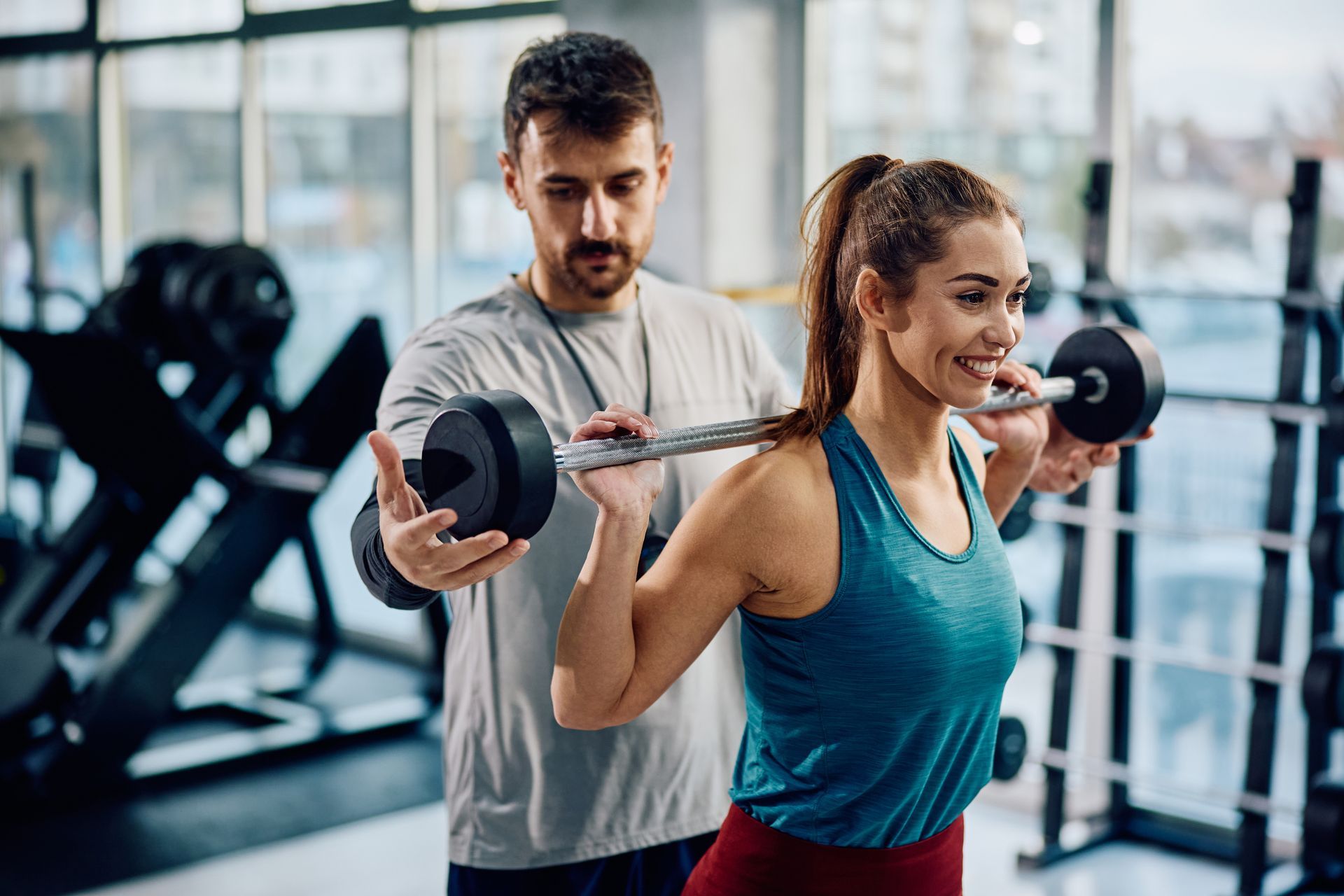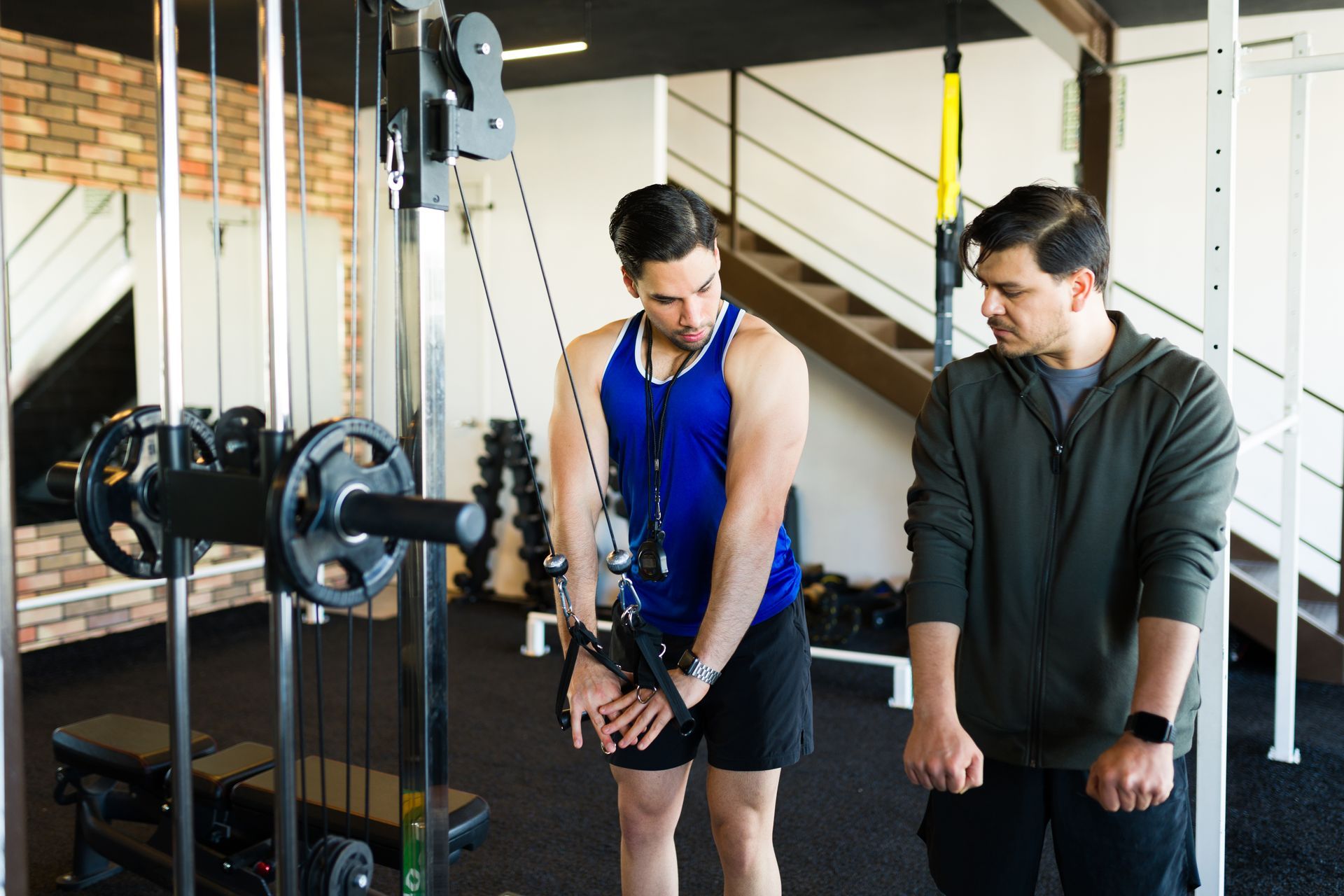July 23, 2024
Strongman Training: Embrace the Power of Unconventional Lifting with a Nashville Personal Trainer
Benefits of Strongman Training
Strongman is a strength sport that challenges competitors with extraordinary feats of power and endurance. Unlike traditional Olympic weightlifting or powerlifting, strongman competitions involve a variety of unconventional lifts using diverse equipment, often in outdoor settings. Athletes pull trucks, carry sandbags, deadlift odd objects, and press giant logs overhead, requiring comprehensive physical fitness and strength.
The Essence of Strongman Training
Strongman training is unique and highly beneficial, offering numerous advantages for athletes and fitness enthusiasts. As a Nashville personal trainer, I’ve seen firsthand how these varied and functional workouts simulate real-world movements, building raw, brute strength. Whether you're pulling trucks or carrying heavy weights, strongman exercises can enhance your fitness, confidence, and overall strength.
Who Can Benefit from Strongman Training?
Answer: Everyone!
The beauty of strongman training lies in its versatility. It’s not just for elite athletes; people of all ages and fitness levels can benefit. For example, elderly clients can use exercises like farmers’ carries to develop grip strength and improve their ability to carry items independently. High-level athletes can gain an edge over their competitors by incorporating strongman practices into their routines. The key is to tailor the load and exercises to fit individual needs and capabilities.
The Massive Benefits of Strongman Training
1. Developing Functional Strength
Functional strength is the ability to move heavy or awkward objects as you might in everyday life. Strongman exercises, such as carrying, pulling, pushing, and throwing, mimic these movements, building practical strength. Additionally, incorporating conditioning into your strength routine ensures you’re not only strong but also fit, making you more capable in real-world situations.
2. Improving Trunk and Grip Strength
Strongman events heavily engage the stabilizing muscles of the trunk, enhancing core stability. Exercises like farmers’ carries require strong grip strength, which can be developed using various grip types with different objects. This variety helps build phenomenal grip strength and overall stability.
3. Increasing Muscle Mass and Bone Density
Strongman exercises often involve high repetitions and prolonged tension, which are excellent for building muscle mass. Activities like sled pulls and carries keep muscles under tension for extended periods, promoting hypertrophy. Additionally, resistance training positively impacts bone density, making it particularly beneficial for older adults at risk of osteoporosis.
4. Overcoming Training Plateaus
Training plateaus are common when the body adapts to repetitive exercises. Strongman lifts introduce new stimuli, challenging your muscles in unfamiliar ways and sparking new levels of adaptation. This variety can help you break through plateaus and continue progressing.
5. Boosting Cardiovascular Fitness
Strongman training can significantly improve cardiovascular fitness. High-intensity exercises like sled pulls elevate the heart rate and challenge the cardiovascular system. For instance, dragging a sled over a distance demands continuous effort from the heart and lungs, boosting overall endurance.
6. Making Fitness Fun
One of the most underappreciated aspects of strongman training is the element of fun. Incorporating unconventional movements like throwing sandbags or dragging sleds keeps workouts interesting and enjoyable. This variety helps maintain motivation and consistency, leading to long-term success in fitness goals.
Top 3 Strongman Exercises for Everyday Athletes
Here are three strongman exercises commonly used with clients, designed to build strength, fitness, and mental toughness.
1. Farmers Carry
How to Do It:
- Set up weights outside your feet.
- Perform a hybrid squat-hinge to grip the handles.
- Brace your trunk, set your back tight, and stand up with the weights.
- Walk forward with a neutral spine, even shoulders, and a steady gaze.
Programming:
- Strength: Heavy carries up to 20 meters, 3-5 sets.
- Fitness: 25-50% of best carry for 50-200 meters, repeated 10 times with 30-second rests.
- Mental Grit: 25-30% of best carry for maximum distance, fewest drops possible.
2. Sled Drags
How to Do It:
- Load the sled with the desired weight.
- Grasp handles or use a belt for reverse drags.
- Brace your core and lean into the walk.
- Keep shoulders set and drive your feet into the ground.
Programming:
- Strength: Heavy drags over 20 meters, 4-6 sets with 2-5 minutes rest.
- Fitness: 50% load, 30 meters every minute for 15 minutes.
- Mental Grit: Drag the sled for one mile with a 30-60% load.
3. Atlas Stone or Sandbag Lifts
How to Do It:
- Crouch down and balance the stone with hands around the center.
- Squeeze the stone and deadlift it past your knees.
- Adjust grip to over the top and drive hips forward to lift onto a platform or shoulder.
Programming:
- Strength: 3 sets of 3 reps to a platform 2/3 your height, 75-90% weight.
- Fitness: Lighter bag/stone, AMRAP in 60 seconds, repeated 5 times.
- Mental Grit: Carry the stone for 250-500 meters with minimal drops.
Incorporating Strongman into Your Routine
Farmer's carries and sled drags can be easily added to any fitness regimen, regardless of current fitness levels. Atlas stone lifts require good mobility and access to equipment but are excellent for advanced trainees.
Starting with simple strongman movements can reinvigorate your training and help you achieve new fitness milestones. As a Nashville personal trainer, I recommend these exercises for their incredible benefits in building functional strength, breaking through plateaus, increasing muscle mass, improving cardiovascular fitness, and, most importantly, making fitness fun.
By integrating these strongman exercises into your workouts, you'll build functional strength, break through plateaus, increase muscle mass, improve cardiovascular fitness, and, most importantly, have fun while doing it.
For personalized guidance and to explore more fitness strategies, consider working with a Nashville personal trainer. Whether you’re looking for personal training in Nashville or need advice on your fitness journey, expert support can make all the difference in achieving your goals.





